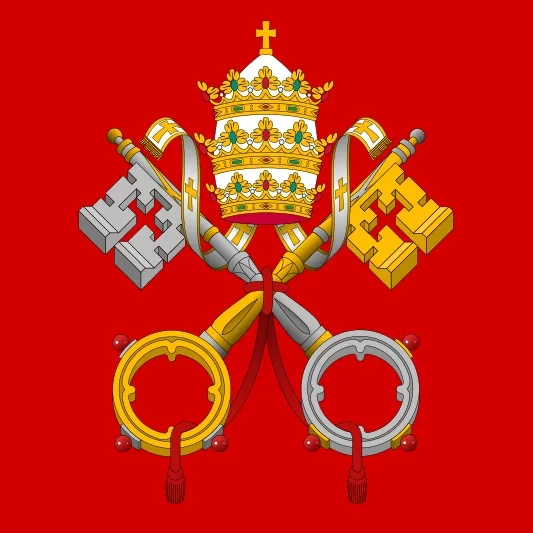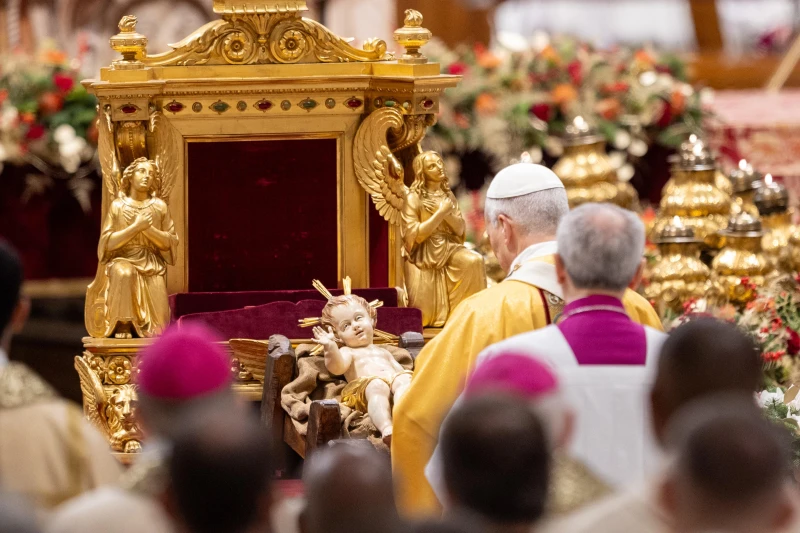Father Artur Bubnevych, pastor of Our Lady of Perpetual Help Byzantine Catholic Church in Albuquerque, New Mexico. / Credit: Courtesy of Father Artur Bubnevych
Ann Arbor, Michigan, Apr 4, 2024 / 07:00 am (CNA).
Father Artur Bubnevych told CNA he is honored and delighted to be among the five priests from the United States selected to attend the upcoming Synod on Synodality meeting of priests in Rome. He said he will aim to share how the liturgy and spirituality of the Byzantine rite is attracting people to the Catholic faith.
In an interview, Bubnevych said he was surprised by the appointment, which had been announced by the Eparchy of Phoenix of the Ruthenian Greek Catholic Church.
“I’m excited to bring the voice of our Church to the synod: the experience of living out the mission, and to walk together and listen to each other and to the Holy Spirit and discern the future path,” Bubnevych said.
“I want to bring a unique perspective and our rich spiritual heritage,” Bubnevych told CNA.
In February, the Vatican announced that synod organizers invited 300 parish priests from around the world to meet in Rome for “listening, prayer, and discernment” from April 28 to May 2 in an effort to shape synodal discussions.
The meeting is scheduled to provide them with “an opportunity to experience the dynamism of synodal work at a universal level.” Bubnevych said that during the meeting, the 300 priests will concelebrate Mass with Pope Francis at St. Peter’s Basilica.
The Ruthenian Greek Catholic Church, which is known as the Byzantine Catholic Church in the U.S., is one of several Eastern Catholic churches or rites in the United States, which include the Melkite, Maronite, Chaldean, and Ukrainian rites. They are all in communion with each other and the papacy while retaining their own liturgy, history, and theology that complement the worldwide Latin or western Church. The Ruthenian Church is found in the United States and Canada, and developed originally in Ukraine. Archbishop William Skurla of Pittsburgh has authority over the rite in North America.
“People are in love with the Byzantine liturgy and the challenges it presents, such as fasting and prostrations in the course of the spiritual year,” Bubnevych said, alluding to the pious practices of his particular Church.
Slavic Christianity stems from the work of Methodius and Cyril, the two saints who spread the Catholic faith in the ninth century to eastern lands, translated the liturgy into the Slavonic language, and developed the Cyrillic alphabet used today in Slavic languages.
The Byzantine Church uses the Divine Liturgy or Mass as it was practiced in the imperial court in Greek-speaking Byzantium and spread by the two saints to what are now Ukraine and Russia. St. John Paul II declared the two saints co-patrons of Europe, in addition to St. Benedict of Nursia.
The Byzantine Church is divided into five eparchies or dioceses in the U.S. In the late 1800s, immigrants from Eastern Europe came to North America, many of whom settled in places such as Pennsylvania, where jobs in mining and iron foundries were available.
Byzantine-rite parishes in the U.S. are small in relation to the larger Latin-rite parishes. For some 20 years, married men have been ordained to the priesthood in the Byzantine Church in the U.S. Churches in the rite prominently display icons, especially on the iconostasis or icon screen that divides the sanctuary where priests celebrate the liturgy from the area for the congregation.
Bubnevych said his parish grew when Latin-rite parishes were still closed due to COVID restrictions. He said that his Our Lady of Perpetual Help Parish in Albuquerque, New Mexico, now has 60 children receiving catechism. There are 100 families in the parish, which are very young, he added.
“The pandemic was a trigger to bring us more into the digital world, allowing us to go beyond our borders,” Bubnevych said.
‘We have a lot of things to share’
“I will go to the synod to share the excellence of what is happening in Albuquerque. It is unique and healthy, and we have a lot of things to share. I am so pleased to be a voice to priests from all over the world,” Bubnevych said.
The meeting, he said, may resemble “Hungarian goulash soup, where everybody contributes something to simmer in the pot. It is going to be very intense.”
Born in 1975 in Ukraine, Bubnevych received an advanced theological degree from the International Theological Institute in Austria in 2001 and taught English at a seminary. He was ordained in 2014 in Phoenix, and in 2015 he was assigned to his New Mexico parish.
Bubnevych said that while living in the U.S. he has learned local customs and how the Catholic faith is lived here.
“Our Church in Ukraine is ethnic,” he said, “and it was persecuted. The Soviet Union did a lot of damage. Our Church has the unique experience of coming out from the underground and assimilated practices from the Roman rite.”
“Here in the U.S., we’re very sensitive about adopting practices of the Latin rite. But in Ukraine, First Fridays, divine mercy, and other Western practices were adopted, and we were very happy about it. Here it is more specifically Eastern. It is a Church for all people; people who are attracted to our spirituality and Byzantine liturgy.”
“Faith in the U.S. is always questioned; you’ve got to defend it and explain it. In Ukraine, people just take it for granted,” Bubnevych said.
He said his Byzantine rite may be uniquely able to work in the U.S. environment, having been persecuted by communism and many of its properties seized by the Russian Orthodox Church of the Moscow Patriarchate and never returned after the fall of the Soviet Union.
“Before our seminary was reopened, the older priests taught seminarians from their notes because their books had been seized,” he said. Byzantine-rite priests and faithful were imprisoned and murdered by the Soviets.
“Our spirituality is very challenging and presents a challenge to the world that is very secularized and has a crisis of vocations and morality. There is a challenge to the truth and how to live it. Our Church, by the way it preserved its calendar and its liturgy without a lot of changes, is a deep source of nourishment and faith,” Bubnevych said.
At the conference, he said, “I will put the Divine Liturgy on the table, which is a continuous call to repentance and [to] evangelize the world. The change we experience through the mystery of Christ’s cross and death: the Divine Liturgy and the beauty of its celebration is what attracts people to our church, the singing and the reverence.”
“It’s important to be a welcoming Church that remains faithful to the teachings of the primitive Church,” he continued. “Our liturgy was founded by the fathers of the Church Sts. Basil and John Chrysostom.”
When asked how outsiders may be attracted to the Catholic faith as practiced in the Byzantine tradition, Bubnevych said: “There is a uniqueness in our parishes in the Southwest. In our parish, out of 100 families, only three are of Slavic ethnicity. Most of the families come from Roman-rite parishes, Protestant, evangelical, and Orthodox churches, or even no faith. They were all invited by other families to come and see. There are families with many children; we have a thriving youth group, and catechism that attracts more families. We invite people to come and see and then journey together.”
“We were able to grow a lot after the [COVID] pandemic because we stayed open when the Latin-rite was very cautious and closed a lot of churches here. We received around 20 families during and after the pandemic in 2020. The pandemic revealed a lot of things and presented a lot of challenges, but it was also a time of growth,” he said.











